| |
|
|
|
|
|
|
|
|
|
|
|
|
| |
 |
|
| |
田润德
编译文/图 2020-09-28
20:36 |
|
| |
|
|
|
|
| |
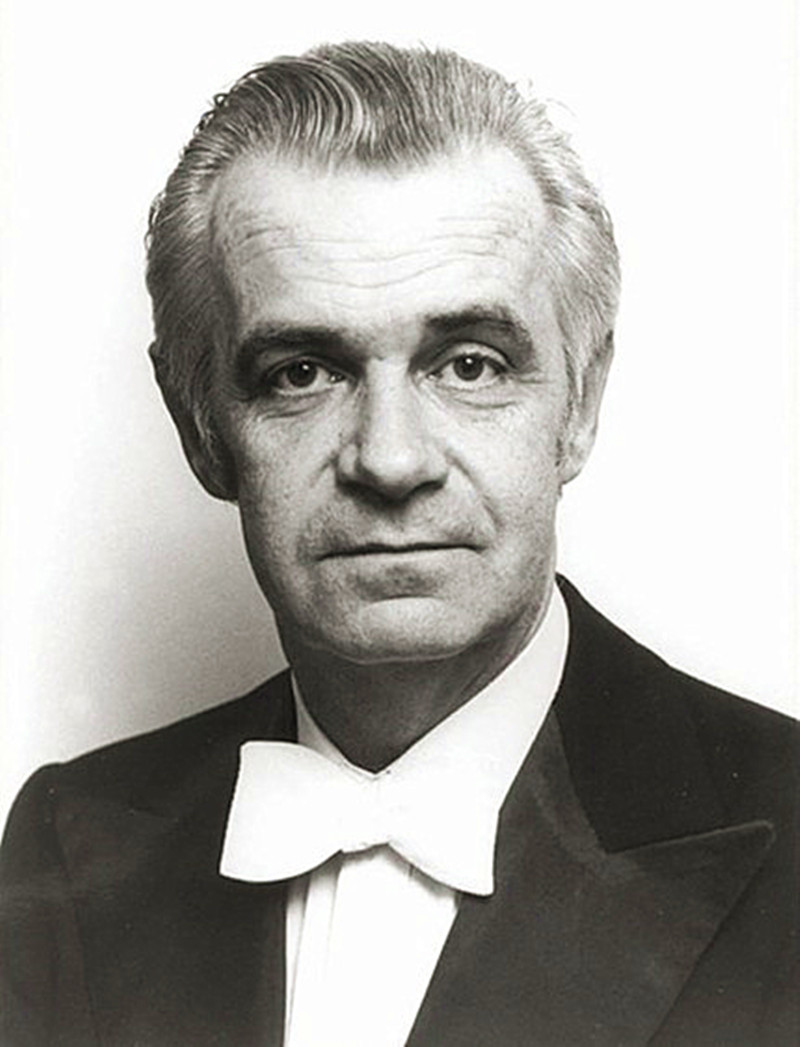 |
|
|
|
| |
伊果·贝索尔德尼(Igor Bezrodny,1930-1997) |
|
|
|
| |
|
|
| |
伊果·贝索尔德尼 (Igor Bezrodny)演奏 拉赫玛尼诺夫《浪漫曲》Rachmaninoff
Romance
|
|
|
|
| |
Rachmaninov 'Romance' Igor Bezrodny (violin)
|
|
|
|
| |
|
|
|
|
| |
音乐历史上的今天 伊果·贝索尔德尼(Igor
Bezrodny,1930-1997)(以下简称贝氏)1930年9月30日诞生于俄国的第比利斯(Tibilisi)。 父亲(Semyon
Bezrodny) 是当地歌剧院乐团的首席小提琴手,后来在莫斯科取得教职;母亲(Tatjana
Pogozheva)是芬兰人,在当时是著名的小提琴教师。在耳濡目染之下,贝氏从小就展现音乐才能,七岁时贝氏随着全家移居到莫斯科,并考取莫斯科中央音乐学校,由伟大的俄国教育家扬波
尔斯基(Abram
Yampolsky,1890-1956)收为弟子,从此与恩师结下深厚的师生缘份,一直到他取得莫斯科音乐院的文凭为止,一共和扬波尔斯基学习了18年(之后就未受教于其他老师),可说是吸收了扬波斯基一生的真传。
除了小提琴之外,贝氏在音乐院就读期间也和 Nikolai Anosov、 Boris Haikin及Leo
Ginsburg(1962-1966)等人学习指挥,这对贝氏日后的音乐事业发展,产生非常深远的影响。1947年贝氏和他的两位同学西特勾韦特斯基(Julian
Sitkovetsky,1925-1958)及柯冈在捷克的布拉格小提琴大赛中平分秋色,同获金牌奖。
1949年又在布拉格的库贝利克(第二奖为皮凯森(Victor
Pikaizen))及德国莱比锡的巴赫小提琴大赛中获得首奖,由于优异杰出的表现,使得他在 1951 年以 20
岁的年纪,获得国家颁赠斯大林奖的最高荣誉。
贝氏卓越的表现,除了使他获得祖国的认同外,也先后在芬兰、爱沙尼亚、前东德、保加利亚、美国等国家获颁名誉学位及勛章,演奏足迹更踏遍了六十多国。除了在独奏方面的优异表现,贝氏也和好友钢琴家D.Bashikirov及大提琴家M.Homitzer组成莫斯科钢琴三重奏,在当时也是非常著名的室内团体。
与芬兰的缘份
由于母亲血缘关系,贝氏也算是半个芬兰人。自1950年起,他每年固定到芬兰演奏(包括独奏及三重奏),指挥乐团及讲学,与芬兰结下了很深的缘份,在芬兰颇具知名度的Jyväskylä
Kesä
Festival就由贝氏主持了长达20年之久。1953年贝氏到芬兰国宝作曲家西贝柳斯(J.Sibelius,1865-1957)位于Järvenpää市的家拜访,两人畅谈甚欢,贝氏不但在大师面前演奏了他(西贝柳斯)所谱写的小夜曲(Serenade),并讨论了作曲家著名的d小调小提琴协奏曲。这次会面让贝氏留下难忘的印象,在他后来少数的录音曲目中,就留下了西贝柳斯两首小夜曲的精彩演奏。
1957年贝氏返回母校任教,与奥伊斯特拉赫及柯冈同为莫斯科音乐院优秀的小提琴教师,1972升格为教授,同时也经常担任世界知名小提琴大赛的评审委员,其中包括苏联的柴可夫斯基大赛,芬兰的西贝柳斯大赛,德国莱比锡巴哈及波兰的维尼奥夫斯基大赛等,除了在教学及演奏的杰出表现,贝氏也渐渐展现他在指挥方面的才华,1976-81年他成为Moscow
Academic Chamber
Orchestra的音乐总监,1986-90受聘为芬兰Turku爱乐交响乐团的总监,同时也经常受邀到欧美各国的知名乐团担任客席指挥,贝氏在音乐方面成就可说是集合了独奏、指挥及教育于一体的优秀音乐家。
自我的坚持
贝氏在音乐的杰出表现虽是有目共睹的,不过他却有着异于其他音乐家的坚持,例如他在教学方面坚持不示范的态度。他从未带琴到学校授课,最主要原因是不希望学生因模仿他的音乐而失去了对音乐的想象力,贝氏生前曾说:「我有很强烈的欲望让我不在课堂上示范给学生听,最主要的原因是不希望他们拷贝我的音乐而失去他们原本拥有的特质,这样或许在教学上须要花比较长的时间,但我的诉求就是希望他们能够拥有更辽阔的音乐视野及更专业的艺术层次。」另外,贝氏的另外一项坚持是他不喜欢录音,他认为录音是一种“机械化的声音”,一个好的演奏家应该同时让自己与听众去充分感受音乐存在于两者之间美感(笔者:当然这只有在现场演奏时才能展现出来),也由于这样的坚持,使得他的录音的数量极少,甚至比不上他英年早逝的同学西特勾韦特斯基。
1990年贝氏受聘为芬兰赫尔辛基(Helsinki)西贝柳斯音乐院的小提琴教授,他将俄国最伟大的扬波斯基学派继续深根于此(柯冈的孙子
Dimitri Kogan
也曾经和他学习),可惜这样的时间只有七年的时间,1997年的9月30日贝氏病逝于赫尔辛基,享年67岁,消息传出令人扼腕,不过同为小提琴家的夫人Mari
Tampere-Bezrodny,仍留在音乐学院任教,继续着他生前的音乐理念;而他们的女儿 Anna-Liisa
Bezrodny也继承了衣钵,成为这个小提琴世家得以传承下去的继承人。
今日视频:1、伊果·贝索尔德尼演奏 拉赫玛尼诺夫《浪漫曲》;2、伊果·贝索尔德尼纪录片 。 |
|
|
|
| |
 |
|
| |
伊果·贝索尔德尼在演奏中的精彩图片 |
|
|
|
| |
Bach played the organ to the
King of Prussia |
|
|
|
| |
 |
|
| |
伊果·贝索尔德尼在比赛中 |
|
|
|
| |
Igor Besoldni was in the
middle of the game |
|
|
|
| |
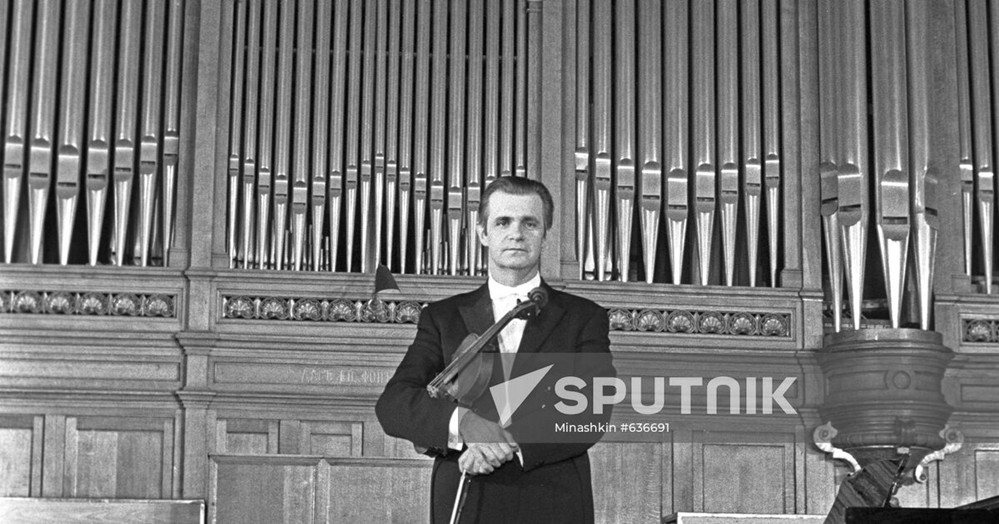 |
|
| |
伊果·贝索尔德尼在比赛中 |
|
|
|
| |
Igor Besoldni was in
the middle of the game |
|
|
|
| |
他的父母是小提琴老师,他开始学习小提琴。1953年毕业于莫斯科中央音乐学校,1955年毕业于莫斯科音乐学院,师从A . I .
Yampolsky。1948年起担任莫斯科爱乐乐团独奏。在国际比赛中获得第一名。J .
Kubelika在布拉格(1949),他的作品。I.S.巴赫在莱比锡(1950)。1951年,他获得了斯大林奖。
Игре на скрипке начал учиться у родителей – педагогов-скрипачей.
Окончил Центральную музыкальную школу в Москве, в 1953
Московскую консерваторию, в 1955 аспирантуру при ней по классу
А. И. Ямпольского. С 1948 солист Московской филармонии. Завоевал
первые премии на Международных конкурсах: им. Я. Кубелика в
Праге (1949), им. И. С. Баха в Лейпциге (1950). В 1951 получил
Сталинскую премию.
他在苏联以及国外多次登台演出,与迪尔搭档进行了超过 10 年的三重奏演奏。A.巴什基罗夫和米哈伊尔·埃里克·霍米茨尔。自
1955 年起,他担任莫斯科音乐学院的教师(1976 年晋升为教授,1981 年担任学院系主任)。
Много выступал в СССР и за рубежом, более 10 лет играл в трио с
Д. А. Башкировым и М. Э. Хомицером. С 1955 – преподаватель
Московской консерватории (с 1976 профессор, с 1981 заведующий
кафедрой).
1967 年,他在伊尔库茨克首次担任指挥。1977 年至 1981 年,他担任了莫斯科室内乐团的艺术总监。1978
年,他被授予“俄罗斯苏维埃联邦社会主义共和国国家艺术家”的称号。从 20 世纪 80
年代初到中期,他一直是图尔库市(芬兰)交响乐团的首席指挥。
自 1991
年起,他在赫尔辛基的雅·西贝柳斯音乐学院担任教授。他的学生中有马。V.费多托夫。在过去的几年里,他经常与妻子——爱沙尼亚小提琴家梅拉娜·塔姆佩尔一起演出(塔姆佩尔是贝索罗诺的学生)。
В 1967 дебютировал как дирижер в Иркутске. В 1977–1981 был
художественным руководителем Московского камерного оркестра. В
1978 ему было присвоено звание «Народный артист РСФСР». С начала
и до середины 1980-х годов был главным дирижером симфонического
оркестра г. Турку (Финляндия).
С 1991 профессор Музыкальной академии им. Я.Сибелиуса в
Хельсинки. Среди его учеников – М. В. Федотов. В последние годы
часто выступал вместе с женой – эстонской скрипачкой М.Тампере
(ученица Безродного).
作者编写了一系列钢琴谱,并著有《雅姆波利斯基教授的教育方法》(与维亚切斯拉夫·尤里耶维奇·格里戈里耶夫合作,莫斯科,1995
年出版)。贝罗斯诺夫于 1997 年 9 月 30 日在赫尔辛基去世。
Автор ряда скрипичных транскрипций, а также книги
«Педагогический метод профессора А. И. Ямпольского» (совместно с
В. Ю. Григорьевым, М., 1995). Умер Безродный в Хельсинки 30
сентября 1997. |
|
|
|
| |
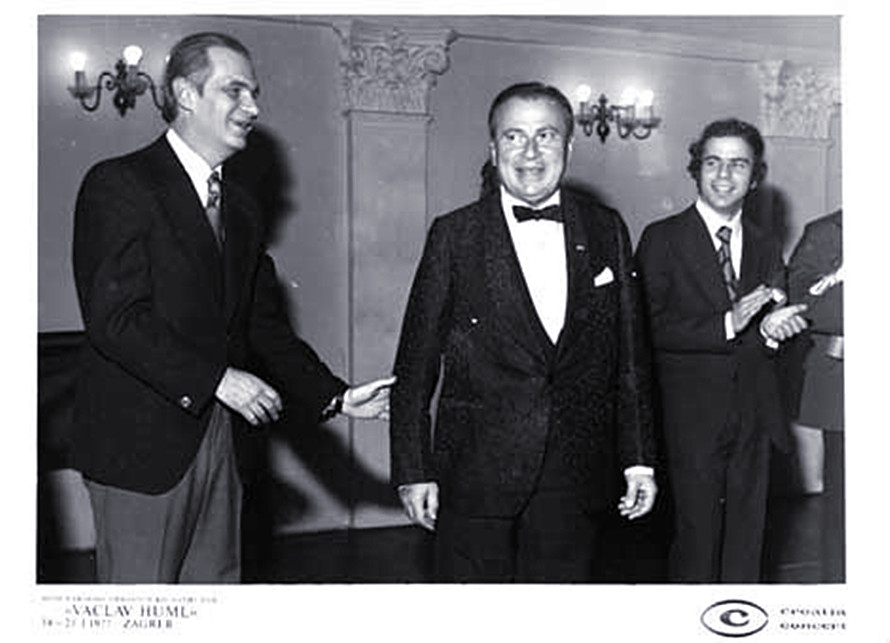 |
|
| |
伊果·贝索尔德尼和小提琴家谢霖 |
|
|
|
| |
WIthaca Igor Bezrodny
and Henryk Szeryng |
|
|
|
| |
 |
|
|
|
| |
杨波尔斯基(Abram
Yampolsky,1890-1956) |
|
|
|
| |
杨波尔斯基是前苏联最重要的音乐家和音乐教育家之一,也是苏维埃小提琴学派的奠基者之一,《人民音乐》1957年6月号发表的《论小提琴演奏者优良音质的培养问题》(毛宇宽译)是杨波尔斯基最后的著作。 |
|
|
|
| |
Yang
Poliski was one of the most important musicians and music
educators in the former Soviet Union, and he was also one of the
founders of the Soviet violin school. The article "On the
Cultivation of Excellent Sound Quality for Violin Performers"
(translated by Mao Yuake) published in the June 1957 issue of
"People's Music" was Yang Poliski's final work. |
|
|
|
| |
阿布尔朗·杨波尔斯基(Abram
Yampolsky,1890-1956)是俄国小提琴学派中最重要的教育家之一,他一生教出许多优秀的俄国小提琴家,其中以柯冈(Leonid
Kogan)最为知名,另外两位柯冈的同窗好友:西特勾韦特斯基(Julian
Sitkovetsky,1925-1958)及贝索尔德尼(Igor
Besrodny,1930-1997),虽然在知名度上比不上柯冈,不过也同为杨波斯基最优秀且重要的弟子,三人被后世并列为杨波斯基的三大弟子。 |
|
|
|
| |
Abram
Yampolsky (1890-1956) was one of the most important educators in
the Russian violin school. Throughout his life, he trained many
outstanding Russian violinists, among whom the most famous was
Leonid Kogan. The other two classmates of Kogan, Julian
Sitkovetsky (1925-1958) and Igor Besrodny (1930-1997), although
not as well-known as Kogan, were also among Yampolsky's most
outstanding and significant students. The three of them are
collectively regarded as Yampolsky's three most prominent
disciples by later generations. |
|
|
|
| |
 |
|
|
|
| |
同是杨波尔斯基教授的弟子——贝索尔德尼的师哥西特勾韦特斯基 |
|
|
|
| |
Sitkovetsky, also a
disciple of Professor Yampolsky and a senior of Besrodny |
|
|
|
| |
1925年11月7日西特勾韦特斯基(以下简称为西氏)出生于基辅(Kiev),四岁时由父亲( Grigory
Sitkovetsky )启蒙学习,从小就展现对小提琴的天赋,之后考入基辅中央音乐学校,师事乌克兰名师戴尔堤( David
Dertie )。 8岁那年西氏在著名的法国小提琴家蒂博( Jacque Thibaud ,1880-1953
)面前演奏(当时蒂博正在苏联进行访问),深获大师的赞许。
1938年西氏与基辅交响乐团合作演出孟德尔颂小提琴协奏曲,隔年四月在莫斯科所举行的母校25周年校庆音乐会中,演奏柴可夫斯基小提琴协奏曲,并在同年考上莫斯科中央音乐学校,由著名的小提琴教育家阿布尔朗.杨波
尔斯基(
Abram Yampolsky )收为门徒。 |
|
|
|
| |
On
November 7, 1925, Sitkovetsky (hereinafter referred to as
"Sitkovetsky") was born in Kiev. At the age of four, he was
tutored by his father (Grigory Sitkovetsky), and from an early
age, he demonstrated a talent for the violin. Later, he entered
the Kiev Central Music School and studied under the renowned
Ukrainian teacher David Dertie. At the age of eight, Sitkovetsky
performed in front of the famous French violinist Jacque Thibaud
(1880-1953) while he was visiting the Soviet Union, and was
highly praised by the master.
In 1938, Shi performed Mendelssohn's violin concerto with the
Kiev Symphony Orchestra. The following April, at the 25th
anniversary school celebration concert of his alma mater held in
Moscow, he performed Tchaikovsky's violin concerto. In the same
year, he was admitted to the Moscow Central Music School and was
taken under the tutelage of the renowned violin educator Abram
Yampolsky. |
|
|
|
| |
 |
|
|
|
| |
1958年人民音乐出版社出版1980年再版的杨波尔斯基所著《小提琴指法概论》在中国流传很广,影响了一代专业小提琴演奏者和音乐爱好者。 |
|
|
|
| |
In 1958, the People's
Music Publishing House published the 1980 reissue of "An
Introduction to Violin Fingerings" by Yaropolski. This book
became widely circulated in China and had a significant
influence on a generation of professional violinists and music
enthusiasts. |
|
|
|
| |
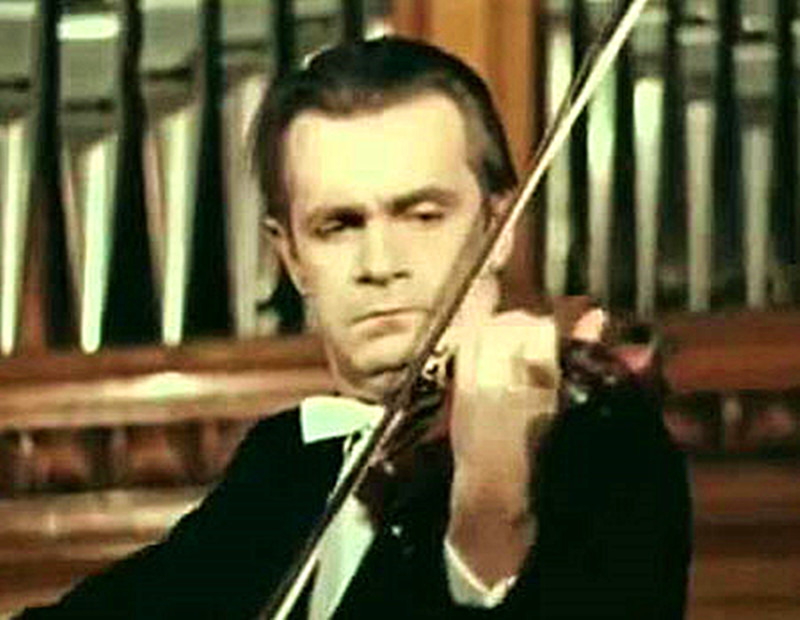 |
|
| |
伊果·贝索尔德尼演奏的图片 |
|
|
|
| |
Picture of Igou
Besoldeni's performance |
|
|
|
| |
Today in
Music History: Igor Bezrodny (1930-1997) (hereinafter referred
to as Bezrodny) was born on September 30, 1930 in Tbilisi,
Russia. His father, Semyon Bezrodny, was the principal violinist
of the local opera orchestra and later held a teaching position
in Moscow; his mother, Tatjana Pogozheva, was Finnish and was a
renowned violin teacher at that time. Influenced by his parents,
Bezrodny showed musical talent from a young age. At the age of
seven, he moved to Moscow with his family and was admitted to
the Moscow Central Music School. He was taken as a student by
the great Russian educator Abram Yampolsky (1890-1956), and thus
formed a deep teacher-student relationship with his mentor until
he obtained the diploma from the Moscow Conservatory. He studied
with Yampolsky for 18 years (after that, he did not receive
instruction from other teachers), and can be said to have
absorbed the true teachings of Yampolsky throughout his life.
Besides the violin, during his time at the music school,
Bezrodny also studied conducting with Nikolai Anosov, Boris
Haikin, and Leo Ginsburg (1962-1966). This had a very profound
impact on his future musical career. In 1947, Bezrodny, along
with his two classmates, Julian Sitkovetsky (1925-1958) and
Kogan, tied for first place in the violin competition in Prague,
Czech Republic, and both received the gold medal. In 1949, he
also won the first prize in the Kubelik (second prize was Victor
Pikaizen) and Bach violin competition in Leipzig, Germany, due
to his outstanding and remarkable performance, and in 1951, at
the age of 20, he received the highest honor of the Stalin Prize
awarded by the state.
The
Persistence of Oneself Although Bez's outstanding performance in
music is widely recognized, he has a persistence that is
different from other musicians. For instance, he insists on not
demonstrating in his teaching. He never brought a piano to the
school for lessons. The main reason was that he did not want
students to lose their imagination of music by imitating his
music. Bez once said before his death: "I have a strong desire
not to demonstrate my music in the classroom. The main reason is
that I do not want them to copy my music and lose the qualities
they originally had. This might require more time in teaching,
but my demand is to hope that they can have a broader musical
vision and a more professional artistic level." Additionally,
another persistence of Bez was that he did not like recording.
He believed that recording is a "mechanized sound." A good
performer should allow both themselves and the audience to fully
experience the beauty of music existing between the two (the
author: This can only be demonstrated when performing live). Due
to this persistence, he made very few recordings, even fewer
than his deceased classmate Sitkowetsky.
Beethoven's outstanding performance not only earned him
recognition from his homeland, but also led to him being awarded
honorary degrees and medals in various countries such as
Finland, Estonia, the former East Germany, Bulgaria, and the
United States. His concert tours covered more than 60 countries.
Besides his excellent solo performances, Beethoven also formed
the Moscow Piano Trio with his friend pianist D. Bashikirov and
cellist M. Homitzer. At that time, it was also a very famous
chamber group. His connection with Finland Due to his mother's
blood relationship, Beethoven can be regarded as a half-Finn.
Since 1950, he has fixedly performed in Finland (including solo
and trio), conducted orchestras and gave lectures, and formed a
deep connection with Finland. The well-known Jyväskylä Summer
Festival in Finland was hosted by Beethoven for 20 years. In
1953, Beethoven visited the home of Finland's national treasure
composer Jean Sibelius (1865-1957) in Järvenpää. The two had a
pleasant conversation, and Beethoven not only performed the
nocturnes composed by the master (Sibelius) in front of him, but
also discussed the composer's famous D minor Violin Concerto.
This meeting left a lasting impression on Beethoven, and in his
few recorded performances, there are wonderful performances of
Sibelius's two nocturnes. Connection with Finland Since 1950,
Beethoven has performed in Finland every year (including solo
and trio), conducted orchestras and gave lectures. He formed a
deep connection with Finland. The well-known Jyväskylä Summer
Festival in Finland was hosted by Beethoven for 20 years. In
1953, Beethoven visited the home of Finland's national treasure
composer Jean Sibelius (1865-1957) in Järvenpää. The two had a
pleasant conversation, and Beethoven not only performed the
nocturnes composed by the master (Sibelius) in front of him, but
also discussed the composer's famous D minor Violin Concerto.
This meeting left a lasting impression on Beethoven, and in his
few recorded performances, there are wonderful performances of
Sibelius's two nocturnes. Return to his alma mater and teaching
In 1957, Beethoven returned to his alma mater to teach, along
with Oistrakh and Kogan, as outstanding violin teachers of the
Moscow Conservatory. In 1972, he was promoted to professor and
also frequently served as an adjudicator for world-renowned
violin competitions, including the Tchaikovsky Competition in
the Soviet Union, the Sibelius Competition in Finland, the
Leipzig Bach Competition in Germany, and the Viniowski
Competition in Poland. In addition to his outstanding
performances in teaching and playing, Beethoven gradually
demonstrated his talent in conducting. From 1976 to 1981, he
became the music director of the Moscow Academic Chamber
Orchestra. From 1986 to 1990, he was appointed as the director
of the Turku Philharmonic Orchestra in Finland. He was also
frequently invited to serve as a guest conductor in renowned
orchestras in Europe and America. Beethoven was undoubtedly an
outstanding musician who combined solo, conducting and
education.
In
1990, Beethoven was appointed as a violin professor at the
Sibelius Music Academy in Helsinki, Finland. He continued to
deeply root the most renowned Yaropolsky school of Russia here
(Dimitri Kogan, the grandson of Kogan, also studied under him).
Unfortunately, this period lasted only seven years. On September
30, 1997, Beethoven passed away in Helsinki at the age of 67.
The news was deeply mourned. However, his wife Mari
Tampere-Bezrodny, who was also a violinist, remained at the
music academy to teach and continue his musical philosophy.
Their daughter Anna-Liisa Bezrodny also inherited the mantle and
became the successor that ensured the continuation of this
violin family.
Today's
video: 1. Igor Bezrodny performs Rachmaninoff's "Rhapsodies"; 2.
Igor Bezrodny documentary. |
|
|
|
| |
|
|
|
|
| |
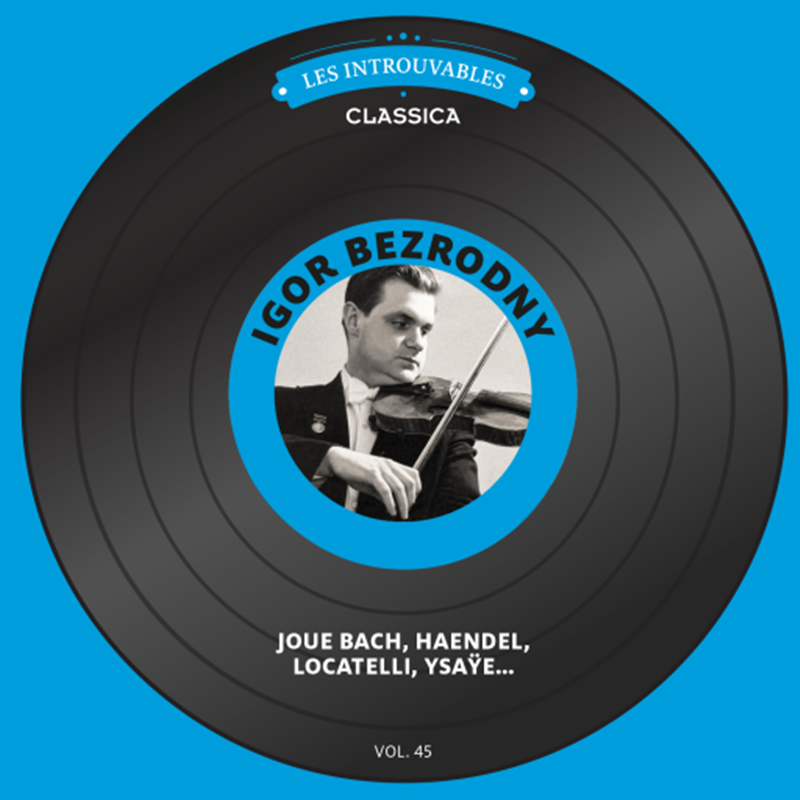 |
|
| |
伊果·贝索尔德尼演奏巴赫、洛克台里、伊萨伊等作曲家的作品的唱片 |
|
|
|
| |
The CD of Igor
Besoldni's performances of works by Bach, Röckterli, Ysaÿe
and others |
|
|
|
| |
 |
|
| |
伊戈尔·贝兹罗德尼 - 小提琴手
莫斯科爱乐乐团/格奥尔基·罗杰斯捷夫斯基 贝多芬/小提琴协奏曲 在 D 大调作品 61 号中 |
|
|
|
| |
Igor Bezrodny -
Violinist, Moscow Philharmonic Orchestra / Georgi Rogeshevsky.
Beethoven's Violin Concerto in D Major, Op. 61 |
|
|
|
| |
 |
|
|
|
| |
伊戈尔·贝兹罗德尼独奏音乐会的唱片 |
|
|
|
| |
The recording of Igor
Bezrodny's solo concert |
|
|
|
| |
 |
|
|
|
| |
伊戈尔·贝兹罗德尼重奏音乐会的唱片 |
|
|
|
| |
The recording of Igor
Bezrodny's recital concert |
|
|
|
| |
亚伦·罗桑接受访谈——“俄罗斯小提琴学派” |
|
|
|
| |
美国杰出的小提琴家亚伦·罗桑多年前接受”violinist” (小提琴杂志) 劳里(Laurie
)的访谈中有一段对俄罗斯小提琴学派演奏风格和技术的总结,让我明白为何俄罗斯学派的小提琴家通常琴音如此饱满,声音的响度和“厚度”感明显高一筹:
“当今的小提琴演奏有两种主要流派,它基本上与握弓的方式以及处理弓的方式有关。一种风格是以伊萨伊为代表的法-比利时学派(Franco-Belgian
School),
另外一种是俄罗斯握弓法。伊萨伊是维厄当的弟子。法-比学派的握弓方式与以奥尔为代表的俄罗斯学派略有不同。在俄罗斯学派中,他们将大部分压力放在食指上,手转动得更多,小指不知何故“飞”了起来。在法比学派中,是三个手指,食指,中指和无名指一起工作;小指轻轻放在弓上,弓移动得更快,并且不会施加太大的压力。不幸的是,这是一个被遗忘或忽视的小提琴演奏流派;今天人们甚至没有意识到它。
我在 Strad 上写过一篇关于运弓艺术的文章。( Violinist Aaron Rosand on how to
produce a beautiful tone | The Strad)
俄罗斯学派通常在施加更大的弓压,据说那样会发出更厚重的声音。但你不能一直使用它,因为它会限制很多灵活性。
劳里:不过,海菲兹似乎足够灵活……
罗桑德:海菲茨的手腕很高,他是奥尔的俄罗斯学派弟子中唯一做到这一点的人,事实上,他是有史以来最伟大的演奏家,后来他的上臂遇到了麻烦;他在72岁左右接受了手术。我认为这是他运弓时肘部比较高,从而对手臂施加了太大的压力导致,以至于后来遇到了障碍。现在,如果你观看与奥尔、米沙·埃尔曼或内森·米尔斯坦,及和他们关系密切的津巴利斯特的演奏,你会发现他们的运弓方式完全不同。每个人都采用了一些俄罗斯学派的方法来拉长弓(长音持续的运弓)。从津巴利斯特那里,我学会了可以如何拉长弓半小时!这虽然有点夸张,但他可以用两弓演奏肖松
《音诗》的开头,整个开头,而且声音极好! |
|
|
|
| |
Aaron
Rosan interviews - "The Russian School of Violin Playing" |
|
|
|
| |
Many years
ago, when the outstanding American violinist Aaron Rosand was
interviewed by Laurie of "violinist" magazine, he made a summary
of the playing style and techniques of the Russian violin
school, which helped me understand why the violinists of the
Russian school usually have such rich and full tones, with a
significantly higher volume and "thickness" sensation: "There
are currently two main schools of violin playing, which are
basically related to the way of holding the bow and the way of
handling the bow. One style is the Franco-Belgian School
represented by Isay, and the other is the Russian bow-holding
method. Isay was a student of Viardot. The bow-holding method of
the Franco-Belgian School is slightly different from that of the
Russian School represented by Or. In the Russian School, they
place most of the pressure on the index finger, the hand rotates
more, and the little finger somehow "flies" up. In the
Franco-Belgian School, it is the three fingers, the index
finger, the middle finger, and the ring finger working together;
the little finger is gently placed on the bow, the bow moves
faster, and it does not apply too much pressure. Unfortunately,
this is a forgotten or overlooked school of violin playing;
today, people even don't realize it. I wrote an article about
the art of bowing on Strad (Violinist Aaron Rosand on how to
produce a beautiful tone | The Strad). The Russian School
usually applies greater bow pressure, and it is said that it
will produce a more profound sound. But you can't always use it,
because it will limit a lot of flexibility. Laurie: However,
Heifetz seemed to be flexible enough... Rosand: Heifetz's wrist
was very high. He was the only one among the Russian School
disciples of Or who achieved this. In fact, he was the greatest
performer of all time. Later, his upper arm had problems; he
underwent surgery around the age of 72. I think this was because
his elbow was relatively higher when he played, thereby applying
too much pressure to the arm, which led to a later obstacle.
Now, if you watch the performances of Or, Mishael Elman, Nathan
Milstein, and those closely related to them, Zimbilist, you will
find that their bowing methods are completely different.
Everyone adopts some methods of the Russian School to elongate
the bow (for sustained bowing). From Zimbilist, I learned how to
elongate the bow for half an hour! This is a bit exaggerated,
but he can play the beginning of Chausson's poem with two bows,
the entire beginning, and the sound is excellent! |
|
|
|
| |
|
|
|
|
| |
|
|
| |
伊果·贝索尔德尼纪录片(Igor Bezrodny documentary 1974, 英文字幕)
|
|
|
|
| |
Igor Bezrodny was one of the great violinists of
the Soviet era. |
|
|
|
| |
|
|
|
|
| |
未得原作者编者授权严禁转载www.mt77.com任何内容 |
|
|
|
|
|
|
|
|
|
|
|
|
|
|


